
SOME NATURAL INSPIRATION
09/13/19 — Ada Broussard
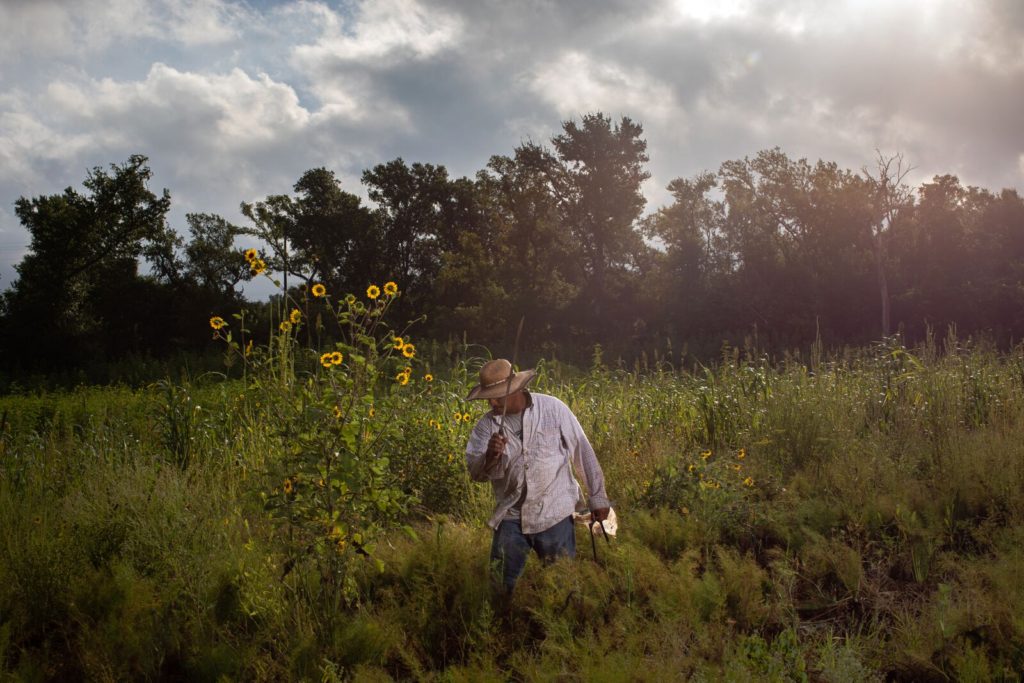 Photo taken this summer at the farm by Tamir Kalifa. Here Luis is using a machete in a jungle of weeds to clear a path.
Photo taken this summer at the farm by Tamir Kalifa. Here Luis is using a machete in a jungle of weeds to clear a path.
Today's post is an inspired one. Today, we are dipping the very tip of our steel toe in the vast world of art and nature/art and agriculture, and are sharing a few of works of our favorite artists that use the earth as their creative medium and farm fare as their subject matter.
Is there anything more awe-inspiring than the blows and bounty of mother nature herself? It’s no surprise that the intersection of farmers and artists is a natural one. Both pursuits require an attitude and a spirit of fearlessness. Both strive to create something greater than themselves, beginning with only a few humble materials. Both farmers and artists have forgone practical reason and chosen a path that seldom is financially secure (or easy). While farmers might not ever be troubled with the “starving” modifier, both farmers' and artists' success is driven by market factors outside their control. But somehow, farmers grow and artists create, both driven by forces as strong as these days are long. Farmers, who are both chemical and biological wizards, combining seeds as wispy as the hairs on your arm with soil, water, and minerals to create vibrant, edible(!), and nourishing(!) plants, are artists in their own right. Or so we (farmers) like to think.
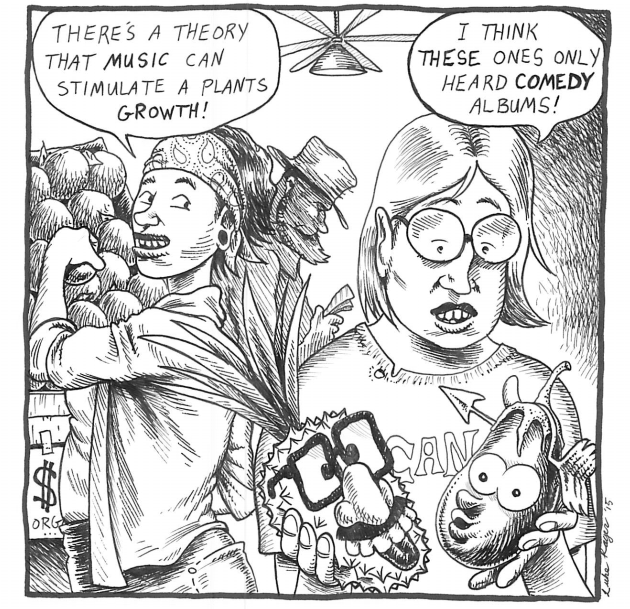 Original farmtoon illustration by CSA Driver Lucas Rager. This one is for sale! Email ada@jbgorganic.com for info.
Original farmtoon illustration by CSA Driver Lucas Rager. This one is for sale! Email ada@jbgorganic.com for info.
On an introspective day, the germination of small black watermelon seed into a tiny but sturdy green sprout, and then into seven pounds of sweet and vibrant pink flesh is spellbinding. But on most days, this germination and the harvesting of this heavy crop is the day’s tasks. We are so interconnected with the natural world that its functions aren't there to be analyzed, and instead are there to be lived. But does an artist always know when they’re creating a masterpiece? Perhaps we’re indulging too much here, but we do think our carrots are quite phenomenal.
Maybe it’s the cooler season ahead and the faint (but detectable) rumors that a reprieve is on its way that have us so inspired. Maybe it’s the way the breeze feels right before the sun comes up. Maybe it’s the way the dirt smells when the drip irrigation has been turned on, the soil saturated, the plants singing. Well, whatever it is, we’re quite inspired by the natural beauty of our natural landscape right now, and are thrilled that there artists out there are able to capture this agrarian experience .
NATURAL LANDSCAPES, NATURAL MATERIALS AS ART
The following artist, in one way or another, use elements in the natural world to create their work.Agnes Denes
 Photo of Agnes Denes, by Agnes Denes. Courtesy of her website.
Photo of Agnes Denes, by Agnes Denes. Courtesy of her website.
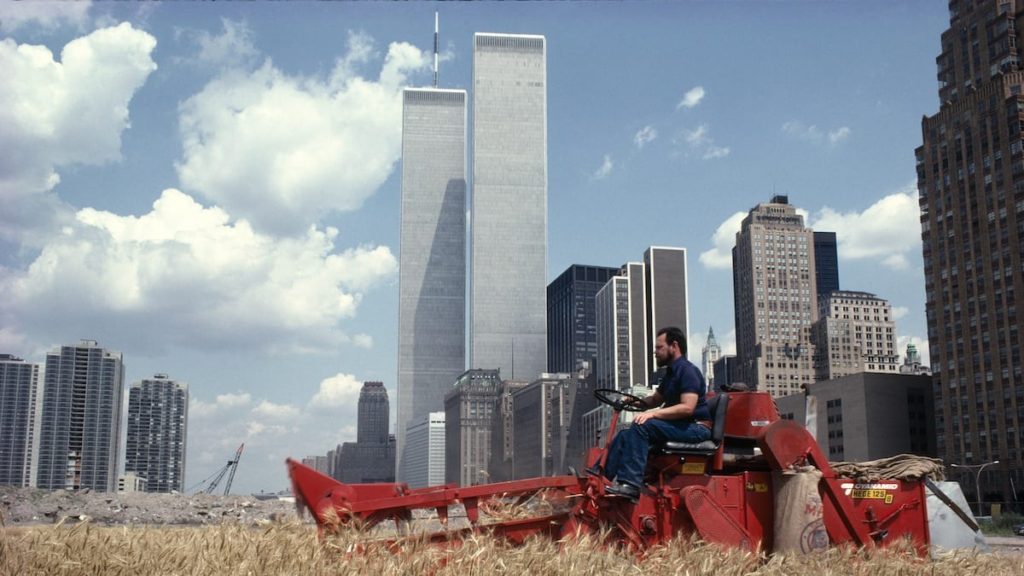 © Agnes Denes. Courtesy Leslie Tonkonow Artworks + Projects, New York
© Agnes Denes. Courtesy Leslie Tonkonow Artworks + Projects, New York
Agnes Denes’s piece “Wheatfield - A confrontation: Battery Park Landfill” was at the forefront of our minds when considering the intersection of agriculture and art. In May of 1982, this land artist planted 2 acres of golden wheat on a landfill in Manhattan, only a few blocks away from the Statue of Liberty and the World Trade Center. To complete the task, two hundred truckloads of topsoil were brought in, and hundreds of pounds of garbage and rock were removed to ready the land. After being carefully farmed by this artist, 1,000 pounds of wheat were harvested.
Denes on the piece: “ Planting and harvesting a field of wheat on land worth $4.5 billion created a powerful paradox. Wheatfield was a symbol, a universal concept; it represented food, energy, commerce, world trade, and economics. It referred to mismanagement, waste, world hunger and ecological concerns. It called attention to our misplaced priorities. The harvested grain traveled to twenty-eight cities around the world in an exhibition called "The International Art Show for the End of World Hunger", organized by the Minnesota Museum of Art (1987-90). The seeds were carried away by people who planted them in many parts of the globe.” (Quote taken from Agnes Dene’s website, which you should visit to see more incredible pictures of this piece, along with others.)
Andy Goldsworthy:
 Sculpture and photo by Andy Goldsworthy as a part of his Ephemeral Works series.
Sculpture and photo by Andy Goldsworthy as a part of his Ephemeral Works series.
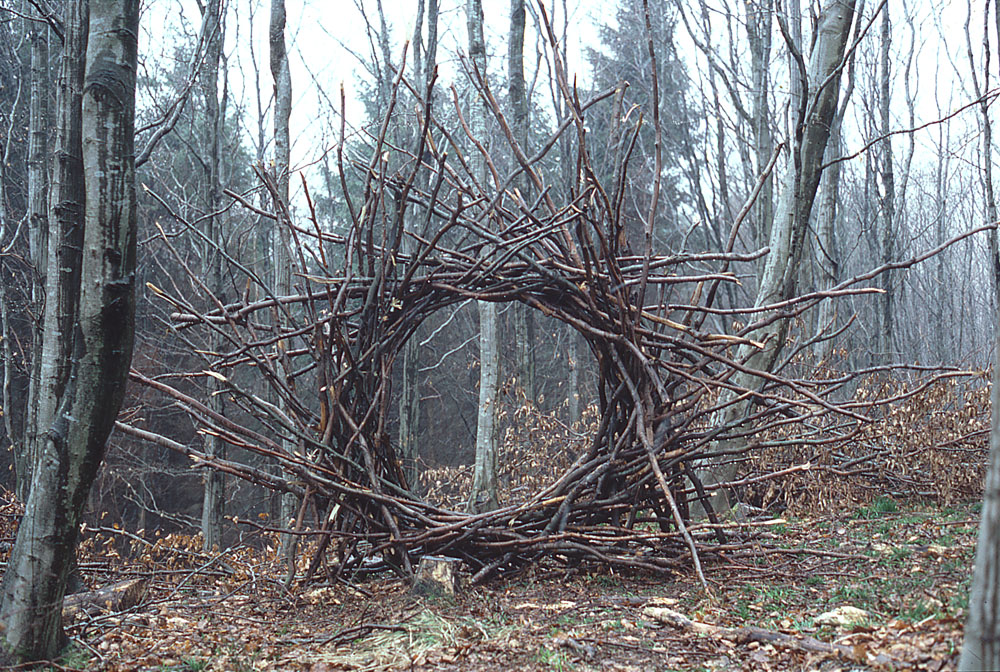 Sculpture and photo by Andy Goldsworthy as a part of his Ephemeral Works series.
Sculpture and photo by Andy Goldsworthy as a part of his Ephemeral Works series.
Andy Goldsworthy is a British sculptor known best for use of leaves, sticks, stones, and even snow and ice to create temporary art pieces, all subject to the degradation from natural forces, whether it be over the course of years or in a matter of moments. From around the age of 13, Goldworthy worked on farms in Yorkshire, England. When asked about his tediously constructed sculptures, Goldworthy says the time consuming yet meditative aspects of farm work primed him for his sculpture work. In 2007 he told the Guardian, "A lot of my work is like picking potatoes. You have to get into the rhythm of it. Farming is a very sculptural profession. Building haystacks or ploughing fields, burning stubble." You're welcome to come pick our potatoes anytime, Andy. We know the rhythm you speak of!
James Turrell:
 James Turrell Third Breath (2009) , Photo: via Kunstgebiet
James Turrell Third Breath (2009) , Photo: via Kunstgebiet
We’re so lucky to have one of the works of land artist, James Turrell, up for public enjoyment at the University of Texas. Instead of creating a piece from tangible naturals like twigs and mud, Turrell simply creates a space where light, itself, is art. Viewing his “Skyscape” is a truly incredible experience, accessible to all of us Austinites via a quick field trip to UT. We strongly encourage you to visit this exhibit. For a sunset viewing, you must make reservations ahead of time. Prepare to be peaceful.
Mark Dion:
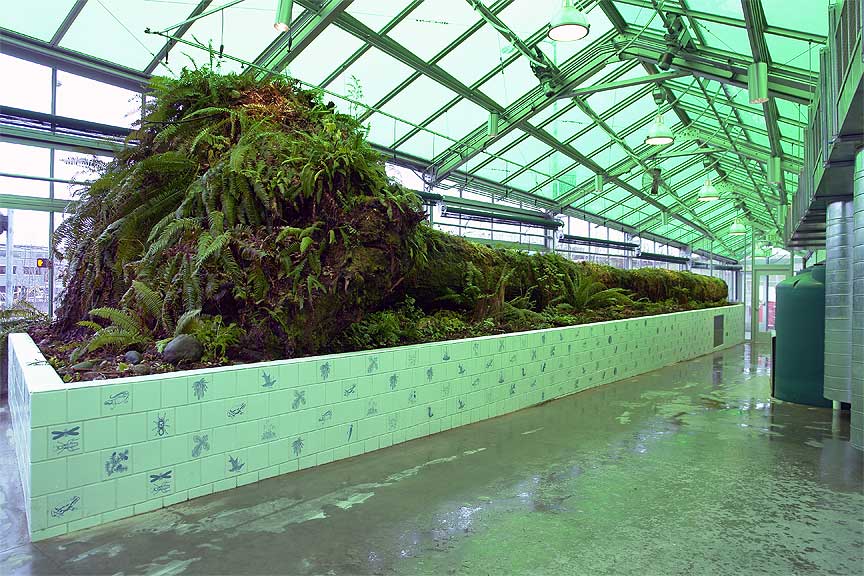 Neukom Vivarium, 2006. Mixed-media installation, greenhouse structure: 80 feet long. Installation view: Olympic Sculpture Park, Seattle. Courtesy of the Seattle Art Museum.
Neukom Vivarium, 2006. Mixed-media installation, greenhouse structure: 80 feet long. Installation view: Olympic Sculpture Park, Seattle. Courtesy of the Seattle Art Museum.
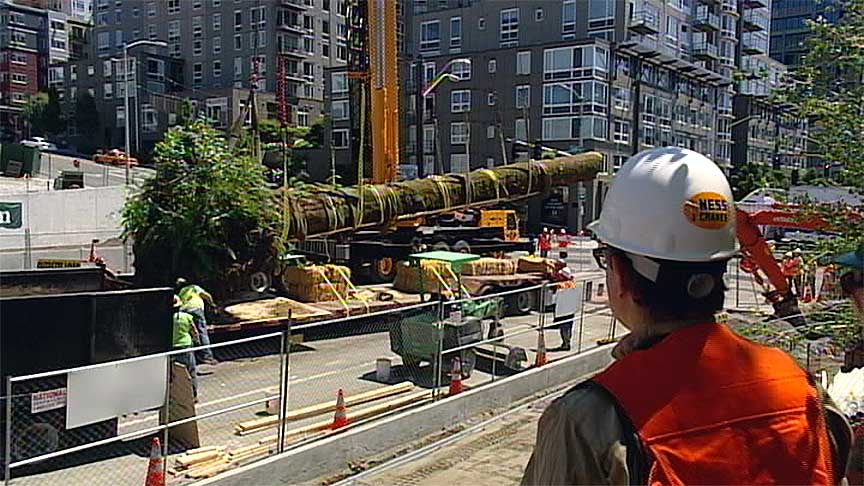 Production still from the Art in the Twenty-First Century Season 4 episode, Ecology. Segment: Mark Dion. © Art21, Inc. 2007.
Production still from the Art in the Twenty-First Century Season 4 episode, Ecology. Segment: Mark Dion. © Art21, Inc. 2007.
Mark Dion, an American conceptual artist working out of New York and Pennsylvania, is known for his exhibition of the national world in a scientific context. In his work “Neukon Vivarium” he took a massive fallen hemlock tree, and put its degradation on display in a carefully constructed greenhouse. Dion, on this piece: “ I think that one of the important things about this work is that it’s really not an intensely positive, back-to-nature kind of experience. In some ways, this project is an abomination. We’re taking a tree that is an ecosystem—a dead tree, but a living system—and we are re-contextualizing it and taking it to another site. We’re putting it in a sort of Sleeping Beauty coffin, a greenhouse we’re building around it. And we’re pumping it up with a life support system—an incredibly complex system of air, humidity, water, and soil enhancement—to keep it going. “ (Quote courtesy of this interview via Art 21)
Maura Ambrose:
Mara Ambrose is an example of the artists and makers out there who transform raw materials from the natural world to create something beautiful, colorful, and in this case, cozy. Maura uses native plants to create natural dyes and uses those to create fiber art that you can use - beautiful heirloom quilts. See her creations on the Folk Fibers website.
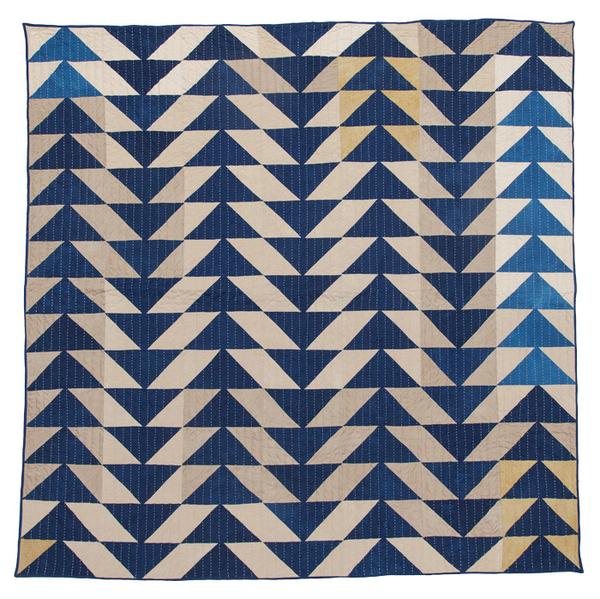 "Flying Geese", courtesy of Folks Fiber's website. Fun fact: Mara used to be the JBG Greenhouse Manager 10 or so years ago.
"Flying Geese", courtesy of Folks Fiber's website. Fun fact: Mara used to be the JBG Greenhouse Manager 10 or so years ago.
FARMS AND FARM PRODUCTS AS ART
Pastoral landscapes have been inspiring artists for centuries, and ever since the Impressionist marched outdoors to capture these scenes, farms have been the subject of art. Here, we’ve decided to highlight 4 local Austin artists who use photography and watercolor to capture the spirit of farm life and the beauty of its products.Scott David Gordon
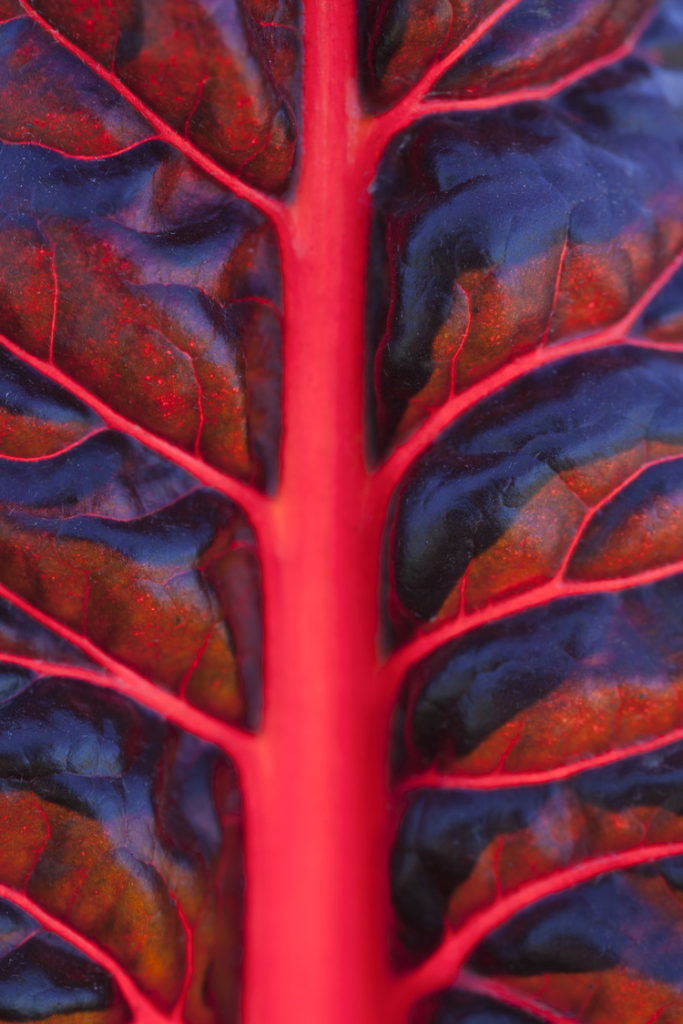 If you look hard, it's chard. Photo by Scott.
If you look hard, it's chard. Photo by Scott.
If you read our blog regularly, Scott David Gordon should be a household name. Scott began at JBG as a delivery driver, but soon began to capture JBG’s farmscapes via digital photography. He has photographed the farm, just about every week, for almost 10 years! (Here are this week’s photos.) We highlight his photographs in our weekly blog, and when considered longitudinally, his photos tell our story better than we ever could.
Scott is there to capture something as stunning as the morning dew puddled on wrinkly nappa cabbage leaves to things more utilitarian in nature like tractor parts, welding helmets, and stacks of produce boxes. Though the physical location of Scott’s photographs remain constant, he somehow manages to capture the reality of the JBG farm world: the ever present variation of people, crops, weather, and tools. And he often has to stand on top of a tractor to do it.
 A once-was leaf. Photo by Scott David Gordon.
A once-was leaf. Photo by Scott David Gordon.
Tamir Kalifa
Tamir Kalifa is a visual journalist living in Austin, Texas. He has followed Beto O’rourke around on campaign rallies and documented the Cajun Navy’s cleanup efforts after Hurricane Harvey. Last summer Tamir shot a beautiful series of portraits of some of the JBG farm crew using his medium format Hasselblad 500 cm. He also captured a series of aerial photographs which make our tractor passes look like carefully orchestrated crop circles. Which maybe, they were.
This summer, Tamir visited the farm again and paired an off-camera flash with his digital camera to add a surreal, vivid element to everyday scenes on the farm. Below, our everyday farm truck, takes on a magical and cinematic quality, and we can’t quite tell if we’re about to be transported into a virtual reality farming game of the future or into a Baroque painting of the past.
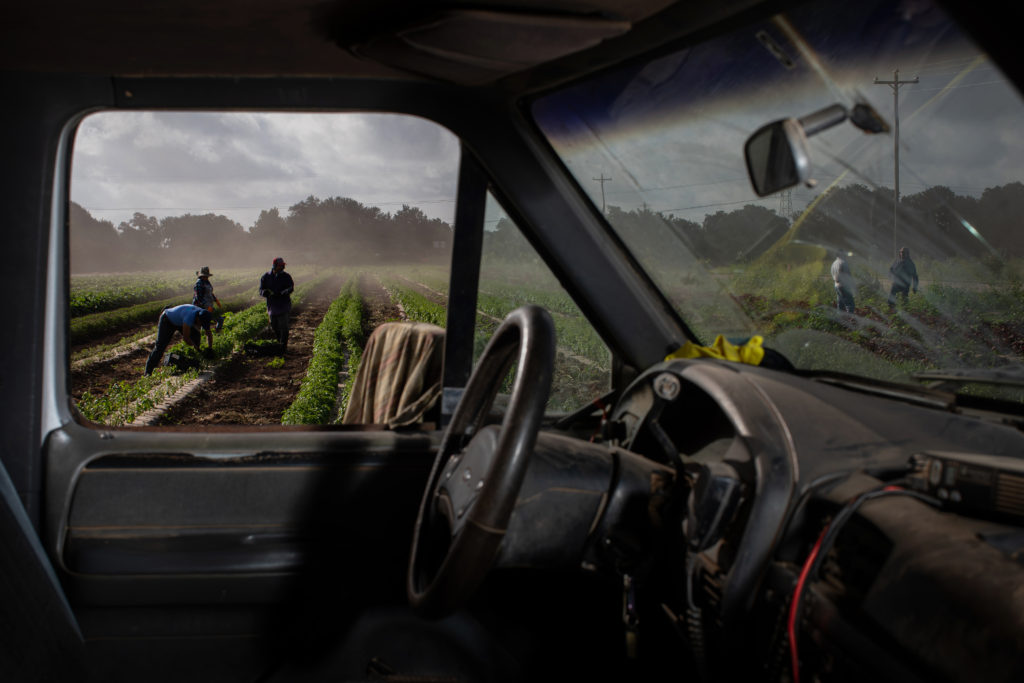 A view into our world. Photo by Tamir Kalifa.
A view into our world. Photo by Tamir Kalifa.
 Basil twist-tying, from below. Photo by Tamir Kalifa.
Basil twist-tying, from below. Photo by Tamir Kalifa.
Mackenize Smith
We first met Mackenzie by way of her beautiful food photography, and somehow convinced her to contribute to our blog as a recipe developer. Her eye for color and light define just about every one of her photos, and her fantastic food styling makes you want to take a bite of whatever it is she’s whipped up. We love the way she made this okra swim for a study she did of our summer produce back in 2018.
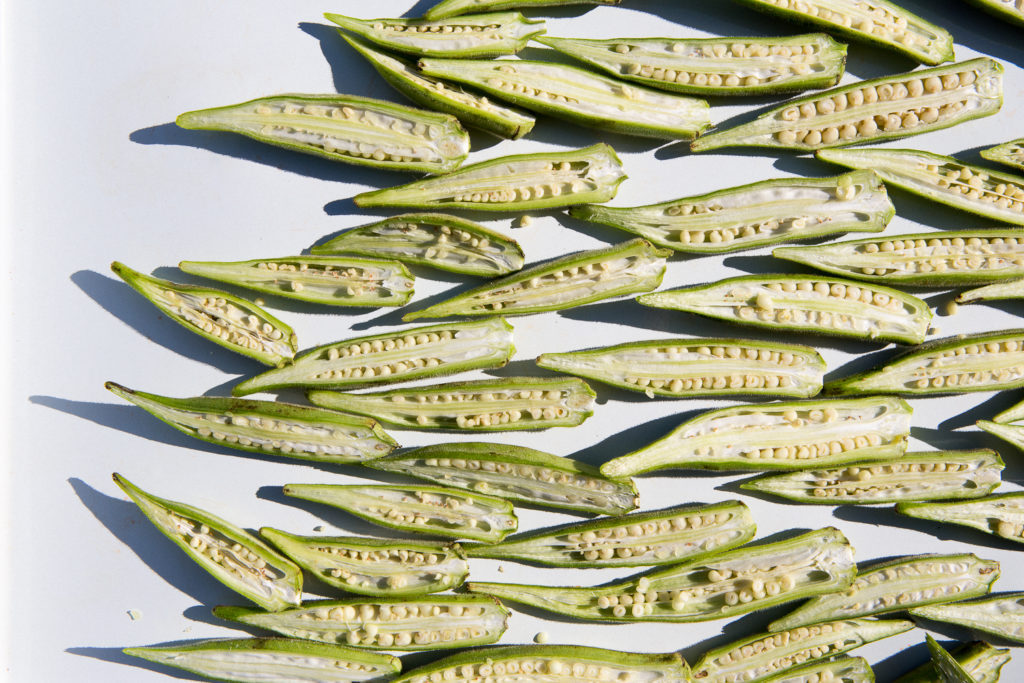 Okra migration. Photo by Mackenzie.
Okra migration. Photo by Mackenzie.
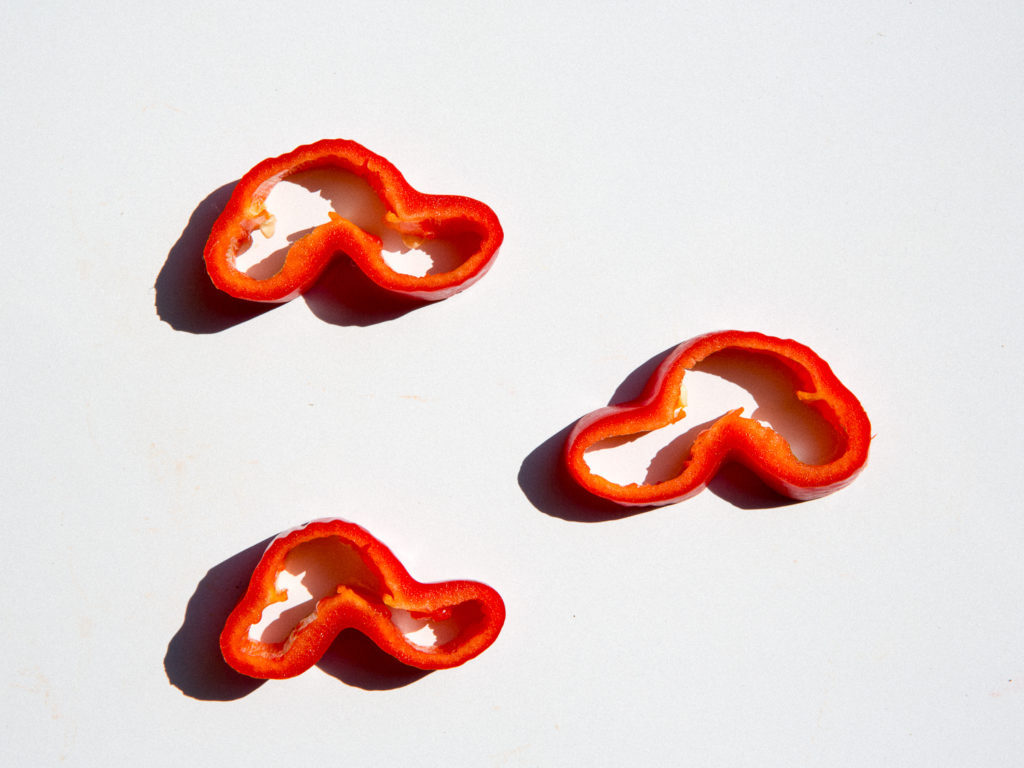 Peppers. Photo by Mackenzie.
Peppers. Photo by Mackenzie.
Jan Heaton
Local watercolor painter, Jan Heaton, highlights the beauty of local produce in her series “The Market” in which shapes, lines, and colors at one moment feel like an abstract illusion, and at another moment feel like an onion. Or, a watermelon radish. If you’d like to hear Jan talk about her process, we encourage you to checkout Scott’s recent podcast on the subject. Here is a link.
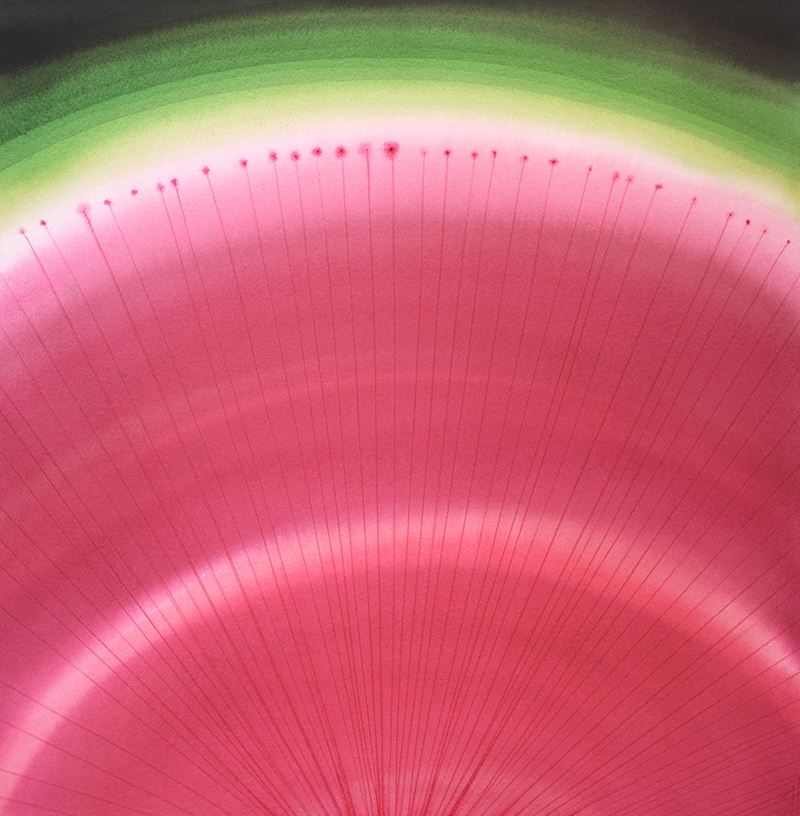 Watermelon radish. Photo courtesy of Jan's website.
Watermelon radish. Photo courtesy of Jan's website.
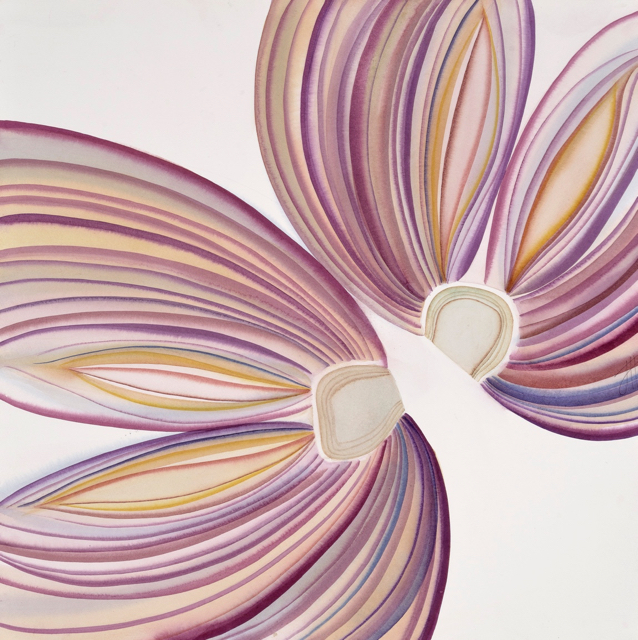 Photo courtesy of Jan's website. High resolution tiff photo on DVD- Holland Photo
Photo courtesy of Jan's website. High resolution tiff photo on DVD- Holland Photo
Farmers as Artists
“We have neglected the truth that a good farmer is a craftsman of the highest order, a kind of artist.” - Wendell Berry.We opened this week’s blog post positing that farmers, themselves, are artists. The way farmers manipulate the earth, and perhaps even the way they season and cook their harvests, is a craft. Many farmers use medium beyond the barnyard, and are talented visual artists, too. Prizer Gallery in East Austin is currently showing an exhibit featuring the visual art of local area farmers, and includes work from JBG staff as well as other local farms like Boggy Creek, Millberg Farm, Middle Grown Farm, Farmshare, and Munkebo… just to name a few. Whether you make a trip to see the Turrell exhibit, make an appointment to see the Farmer as Artist show, or perhaps play with your food and make some edible art, we hope you find some inspiration this weekend.
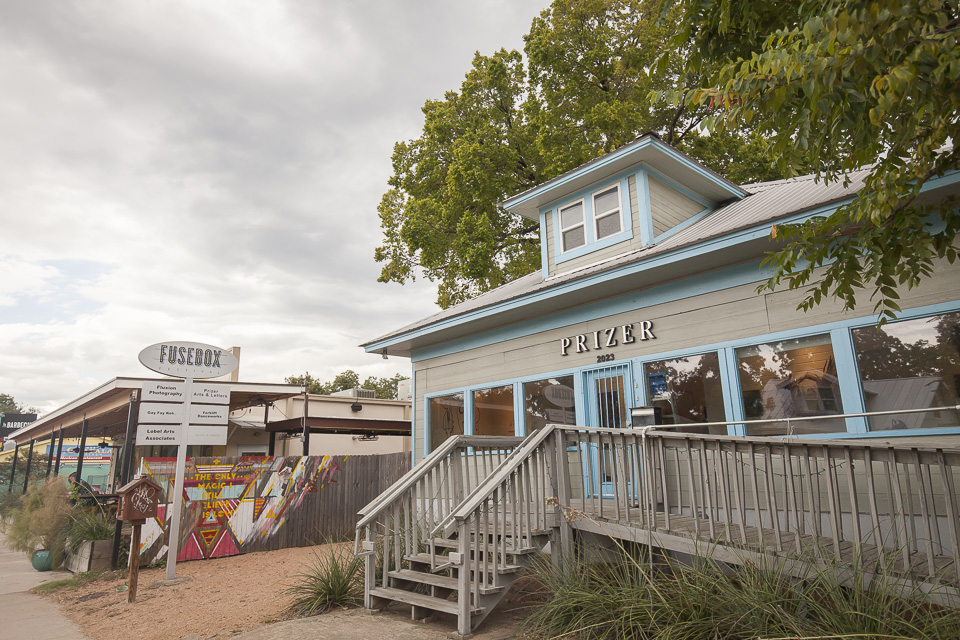 Checkout the Farmer as Artist exhibit that is up at Prizer Gallery. Contact them via Facebook for viewing times. Photo by Scott.
Checkout the Farmer as Artist exhibit that is up at Prizer Gallery. Contact them via Facebook for viewing times. Photo by Scott.






 0 ITEMS IN CART
0 ITEMS IN CART 

